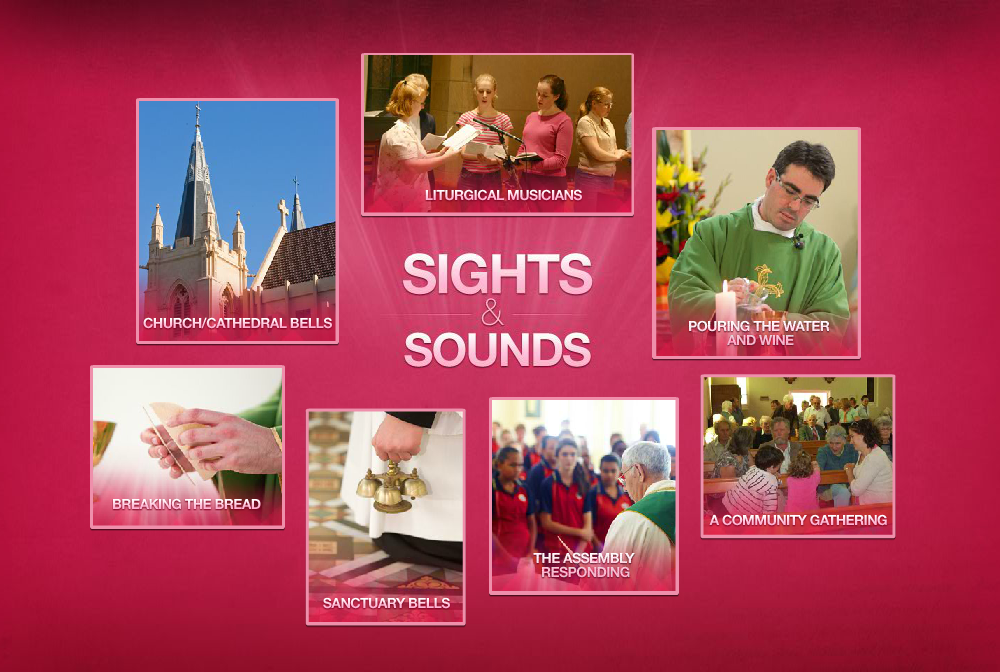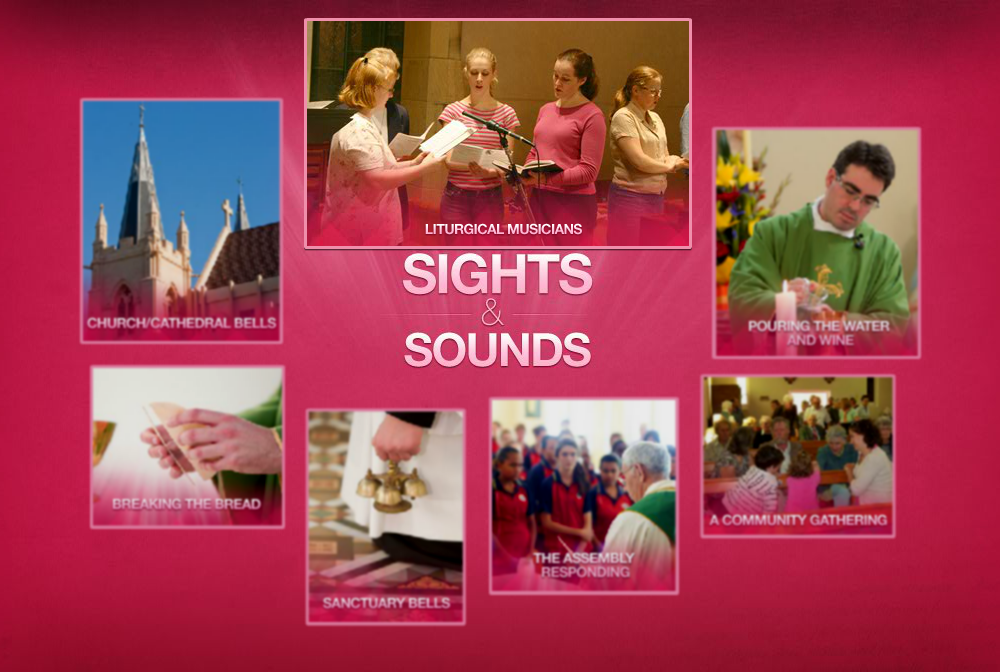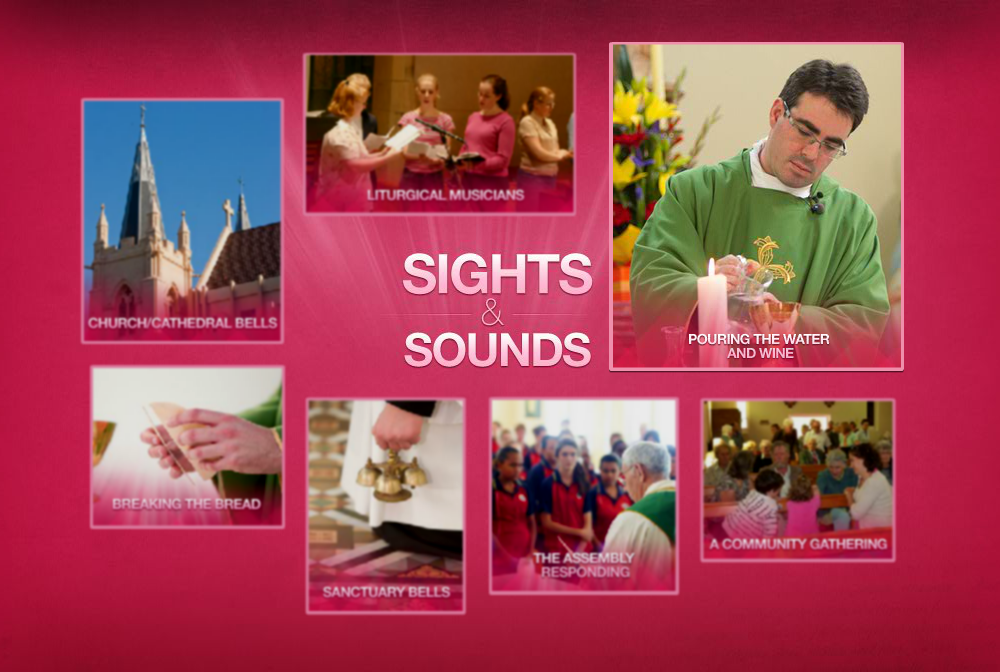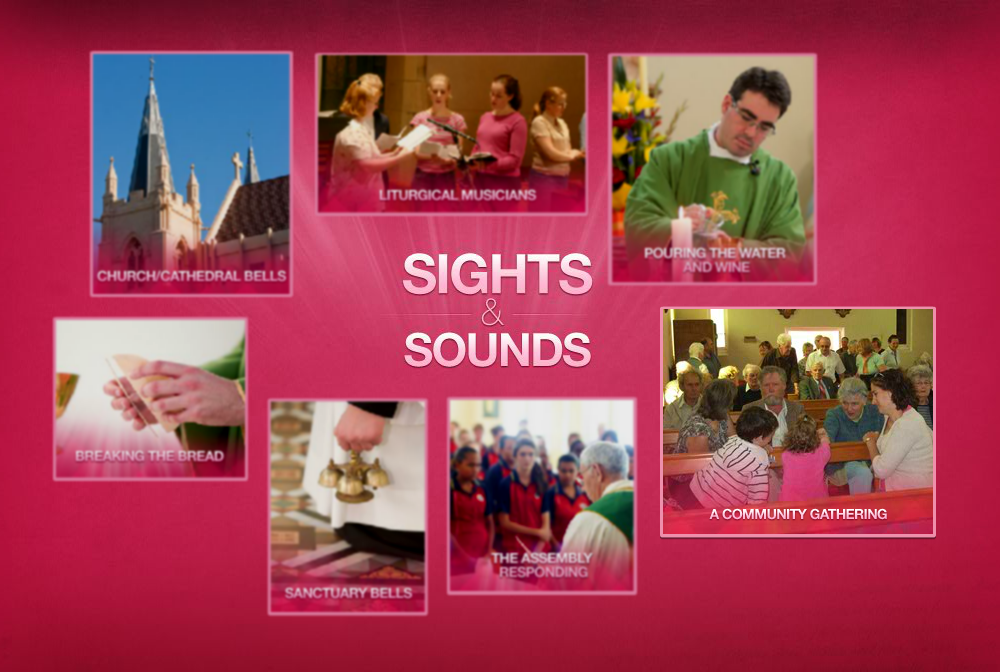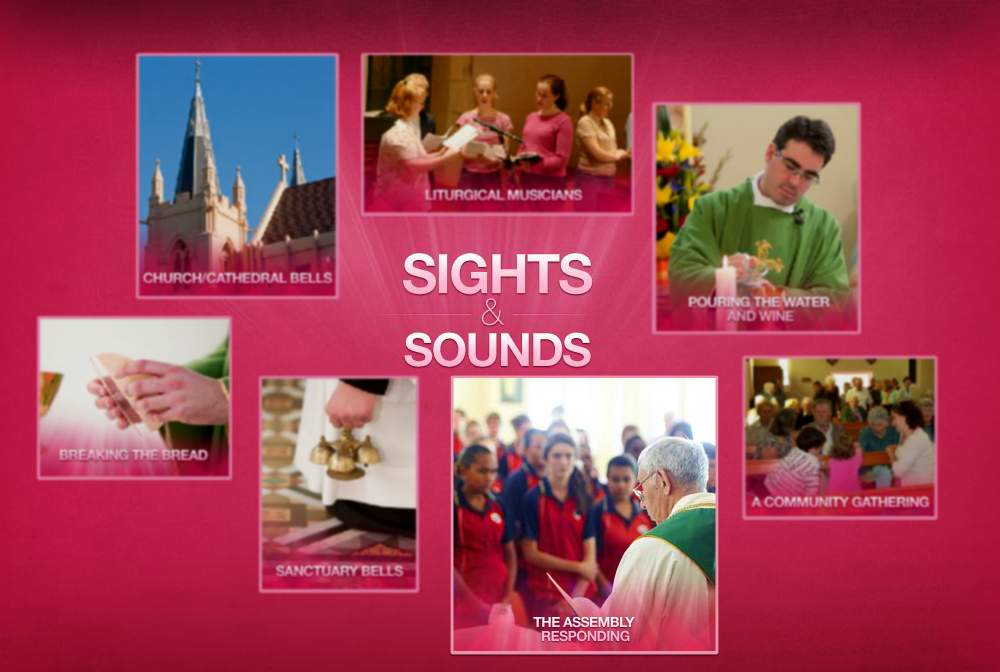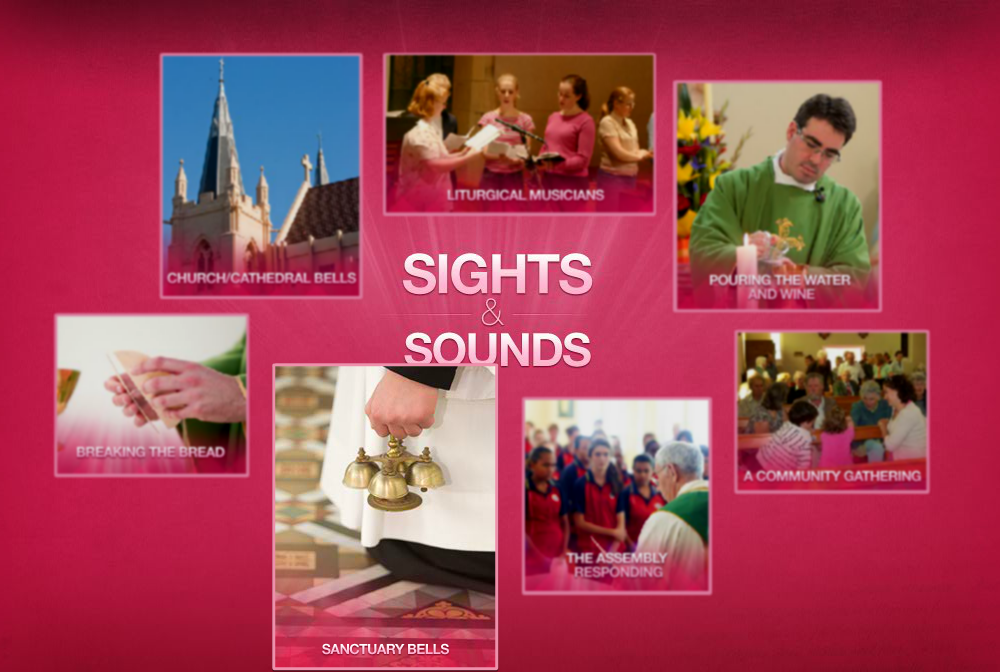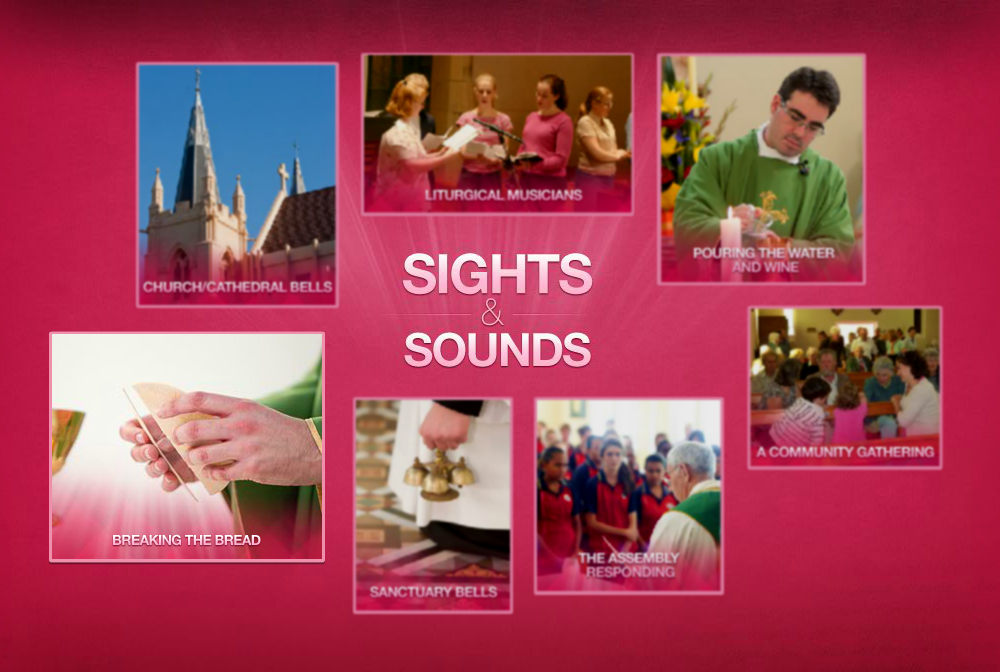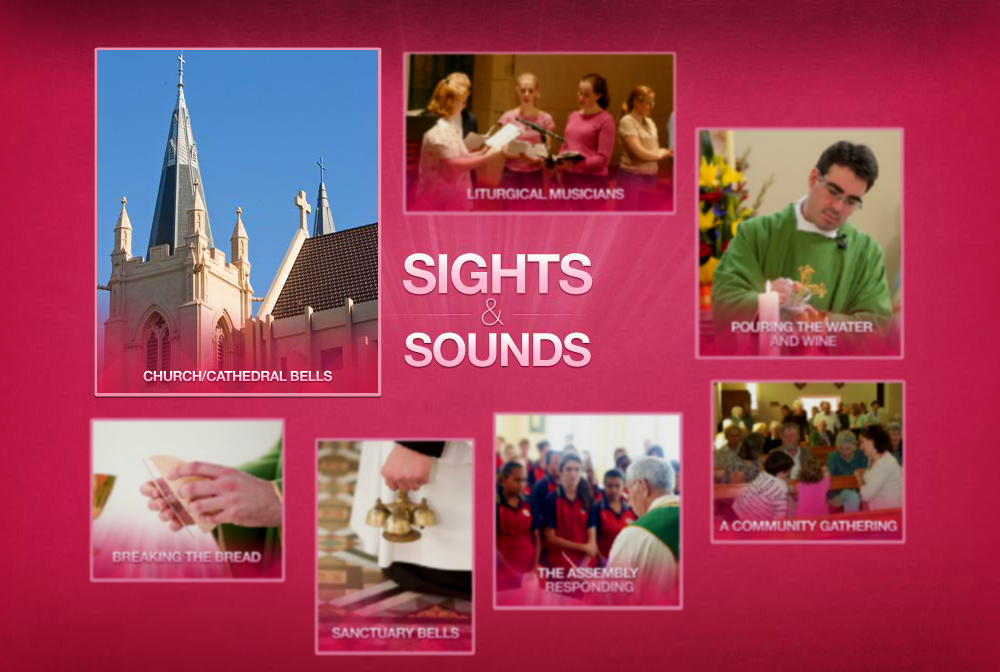SIGHTS AND SOUNDS
What can we hear and what can we see?
LITURGICAL MUSICIANS
During the Mass we hear liturgical musicians who lead the assembly in hymns, Psalms and Eucharistic responses, like the Holy, Holy, Holy. There are many types of music used in the liturgy. During Communion the liturgical musicians lead the people in hymns that help us understand the importance of receiving Christ’s Body and Blood. The hymns sung at the beginning and end of the Mass can be fast, slow or solemn during the different times of the liturgical year. These hymns gather the people at the beginning of Mass and then encourage them to go out and live the Good News when Mass has finished. The music shows us the importance of different parts of the Mass and helps us to join in the quiet, reflective, and joyful times in the liturgy.
SANCTUARY BELLS
Another sound that we might hear in the church is the bells. There are small bells called ‘sanctuary bells’ that are rung during special parts of the Mass, like the consecration. The altar servers may ring the bells during the Eucharistic Prayer to remind people that this part of the Mass is very important. The bells help to focus us and remind us that something very significant is happening in the liturgy.
POURING THE WATER AND WINE
During the Preparation of the Gifts, the Priest pours the wine into the chalice and adds a few drops of water. The wine represents the divine nature of Jesus Christ, and the water represents the human nature of Jesus Christ. The mixing of the wine and the water signifies the Incarnation of Christ. It also reminds us that when Jesus was on the cross, blood and water poured from his side.
CHURCH AND CATHEDRAL BELLS
In the larger churches, and cathedrals in the cities, there might also be bells in towers above the church building. These bells are rung to call people to worship. They may also be rung at special times of the year to remember or celebrate events.
BREAKING THE BREAD
The breaking of the bread is carried out after the Sign of Peace. The Lamb of God is sung or spoken as the Priest breaks the consecrated host in a ceremonial action. This action was established by Jesus through his gesture of breaking the bread at the Last Supper. The faithful receive Communion from the one bread, the Bread of Life, Jesus.
RESPONDING
The whole assembly, including the liturgical ministers, join in the responses during the liturgy. At times the Priest speaks and the assembly answers, or everyone joins in prayers such as the ‘Our Father’. When we join together to pray and respond we remember that God is among us when we gather.
A COMMUNITY GATHERING
Church is a place where people gather with their friends and family. Before Mass people meet and catch up on what has been happening in their lives. At the beginning of Mass, before the Priest enters, the leader often asks us to greet or welcome the people around us. After the Priest has left the church at the end of the liturgy, people stop to talk, share a cup of coffee, and enjoy being part of the community.
For Reflection and Discussion
1
Consider the different uses of bells in the past and today in everyday society. Focus on their use and purpose in Mass. Complete a report including the – Why, Who, What, Where, When and How – on the main church bell and the sanctuary bells.
2
Work in small groups to select appropriate hymns for inclusion in the different parts of the Mass.
3
Choose a particular theme for a Eucharistic celebration undertake the same task choosing hymns appropriate for that theme.
4
Create a soundscape of the sounds you hear during the celebration of the Eucharist.
FOR REFLECTION
- Why is it important to include all the senses during worship?
- Who rings the bells at Church?
- Why is music important during the celebration of Eucharist?
- Why is oral sharing of the stories of life of Christ important?

